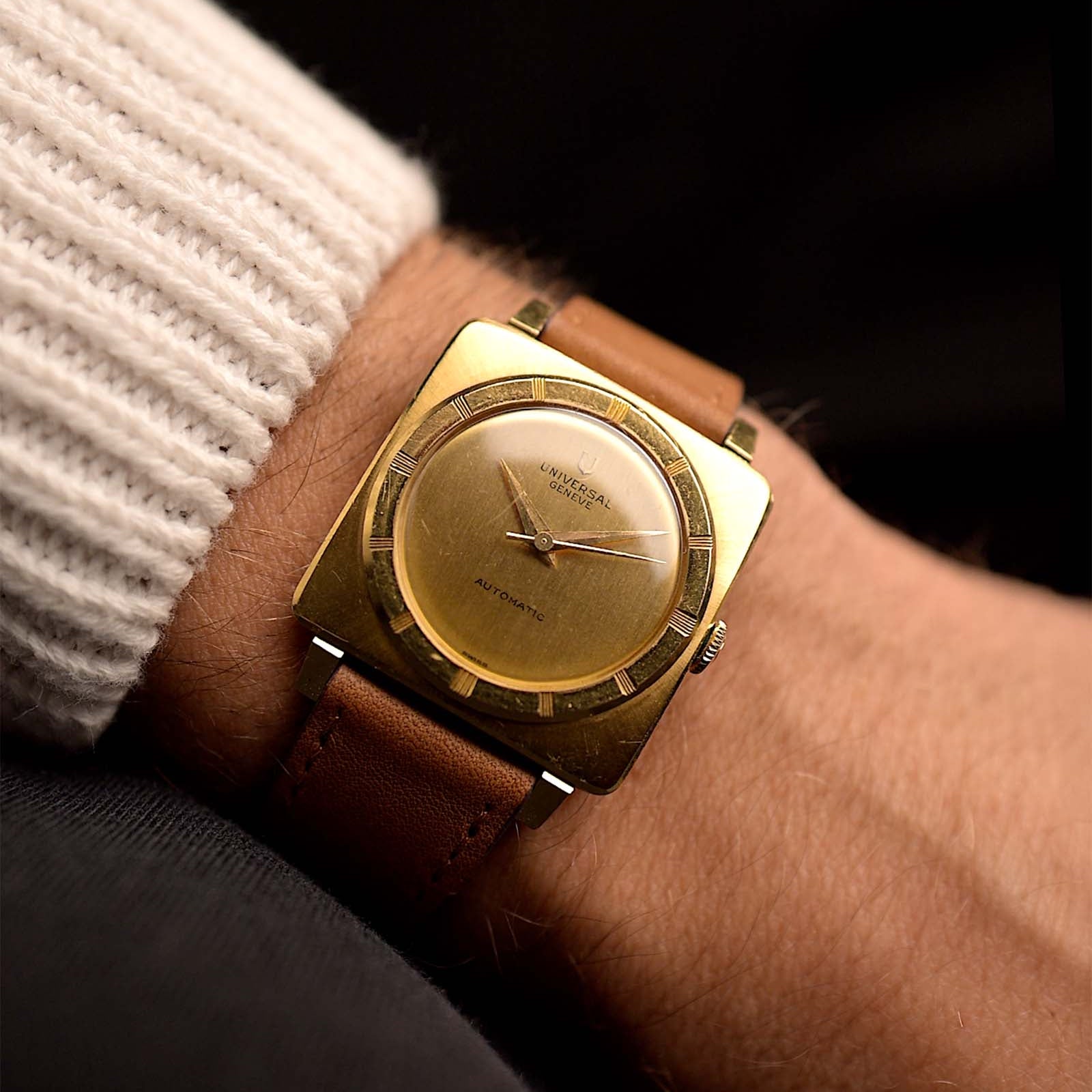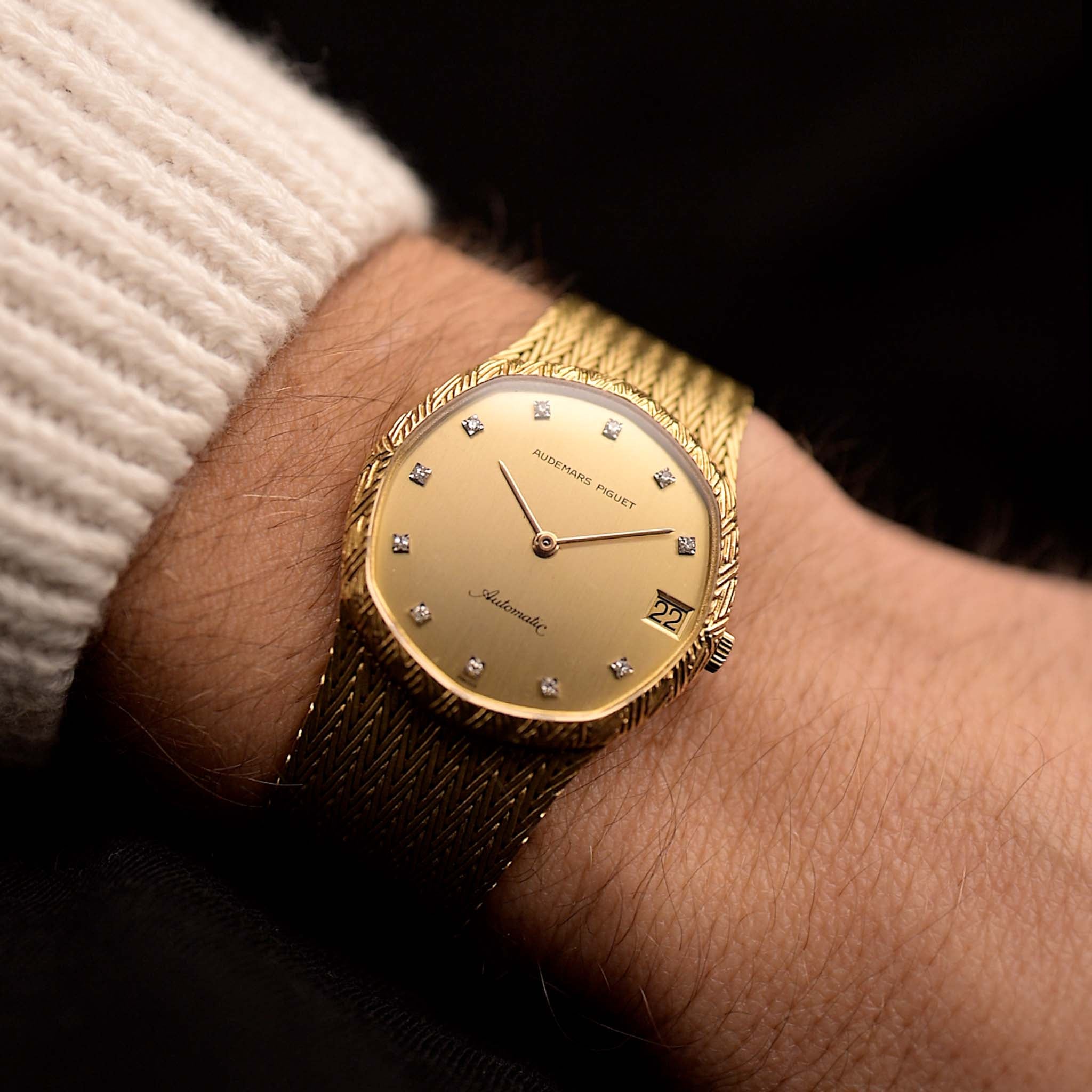The Royal Oak has been a trendsetting watch. As we've seen in the last part it literally defined a whole new genre of sports watches. It is something revolutionary new as a whole but what happens if we tease the 5402 into its parts? We might be able to see where Gerald Genta drew inspiration from and where he completely went off the established paths.
November 30, 2021
A Trendsetting Dial - Royal Oak, Royal Blue
 Marcus Siems @siemswatches
Marcus Siems @siemswatches
Collector, Author, Data Analyst
The Royal Oak has been a trendsetting watch. As we've seen in the last part it literally defined a whole new genre of sports watches. It is something revolutionary new as a whole but what happens if we tease the 5402 into its parts? We might be able to see where Gerald Genta drew inspiration from and where he completely went off the established paths.
The dial is the perfect holistic detail for such an endeavor. The Royal Oaks most central design element is really something remarkable. The combination of petite tapisserie in blue, the two index hands, stick hour markers, the date window and the abundance of numerals compose a very unique look. However, that is only when you put all these things together. Now the question is: how about all these pieces for themselves?
 I keep coming back to the Rolex Datejust 1601... A sports watch of similar age, here, with a blue dial, stick hour markers, index hands, date at 3 o'clock, no numerals & a kinda textured dial - the AP Royal Oak blueprint. Photo @goldammer.me
I keep coming back to the Rolex Datejust 1601... A sports watch of similar age, here, with a blue dial, stick hour markers, index hands, date at 3 o'clock, no numerals & a kinda textured dial - the AP Royal Oak blueprint. Photo @goldammer.me
All these elements can be readily put into the contemporary context. And we have the data to do exactly that: I analyzed design elements of over 4000 watches from the last century, timepieces ranging from 1940 to 2000 publicly listed on chrono24[1]. With simple quantitative data analysis techniques we can define the design evolution over time and see where the Royal Oak sparked some new trends and where it picked up on old ones.
Let us first take a closer look at the dial color. The 5402 dial is blue, which is in the early 1970s a rather uncommon choice. But that is not only true for blue, colored dials are generally rather rare. Before 1960 almost all watch dials were either black, white, silver or golden. Color schemes in sync with the mechanic nature of the movement underneath.
 Figure 2. Distribution of watch dial colors around 1972 and of blue dials from 1940 to 2000. We can see that blue, or generally colored, dials are not very common in the early 1970s but are clearly trending upwards.
Figure 2. Distribution of watch dial colors around 1972 and of blue dials from 1940 to 2000. We can see that blue, or generally colored, dials are not very common in the early 1970s but are clearly trending upwards.
And the First Royal Oak dial became blue, not black not white. But why this color choice? It is hard to say exactly but Gerald Genta might have been drawing inspiration from other late 1960s icons. On one end of the spectrum we got the Heuer Monaco, one of the first automatic chronographs. A watch that itself came with a daring design ready to draw everyone's attention[2,3].
On the other end we got the Patek Philippe Ellipse, one of the classiest watches of all time[4] with not only a revolutionary shape but also bringing forward a radically new method to color a dial blue[5]. An incredibly difficult process, something that makes a watch special. And this particular dress watch was another Genta design from 1968[6,7]. So Genta himself was in the room when blue was established as the royal color, the pinnacle of elegance.
 The blue dialed Patek Philippe Golden Ellipse. A dial color that takes tremendous effort to produce and sets itself apart from the pack. Photo @goldammer.me
The blue dialed Patek Philippe Golden Ellipse. A dial color that takes tremendous effort to produce and sets itself apart from the pack. Photo @goldammer.me
Genta might have been onto something here, a color trend. Starting from the late 60s onward blue and other colored dials start to increase in popularity until reaching 12% market share – every eighth watch – in the late 1990s. By volume the Royal Oak itself does of course not account for this trend. Yet, with its eye-catching appearance the 5402 most likely played some role in this design development. And to put this into perspective, this is just one out of several more details on the dial that eternalize the Royal Oak in horological history.
All about the Royal Oak 5402 here:
Part I - Taking Roots in Modern Horology
Part II - A Trendsetting Dial
Part III - A Creative Dial
Part IV - The Bolt Case Design
Part V - Design Heritage
References
[1] Watches from Chrono24, extracted 2020 Nov. 29th; Karlsruhe, Germany;
[2] Chronomania: The 50-Year History of the Automatic Chronograph, WatchTime;
https://www.watchtime.com/featured/chronomania-the-50-year-history-of-the-automatic-chronograph/
[3] Who invented the first automatic chronograph?; Simone, Catawiki;
https://www.catawiki.com/stories/5869-who-invented-the-first-automatic-chronograph
[4] The History Of The Golden Ellipse; Tania Edwards, Collectability;
https://collectability.com/learn/the-history-of-the-golden-ellipse/
[5] Patek Philippe Golden Ellipse – the first 18k blue gold dial; Felix Goldammer, Goldammer Vintage Watches;
https://www.youtube.com/watch?v=0gXHHeAI5rQ
[6] Gerald Genta Royal Oak and Nautilus; Franz Rivoira, TheTruthAboutWatches;
https://thetruthaboutwatches.com/2019/12/gerald-genta-royal-oak-and-nautilus/
[7] Meet the Man Behind Nearly Every Iconic Watch Design of the 20th Century; Allen Farmello, Robb Report;
https://robbreport.com/style/watch-collector/gerald-genta-2864111/
[8] Ad Patina - Audemars Piguet; Nick, Ad Patina;
https://www.adpatina.com/audemars-piguet
All rights on text and graphics reserved to the Author.




























Leave a comment